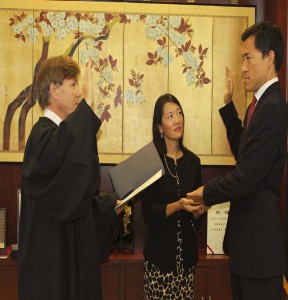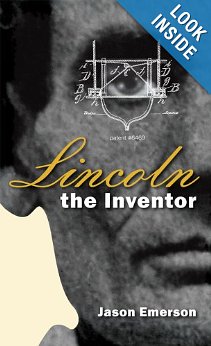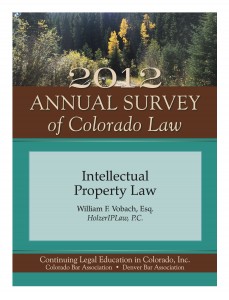The PTO has published statistics relating to the new AIA procedures of Inter Partes Review, Covered Business Method Review, Post-Grant Review, and Derivation Proceedings. You can access the statistics here: [Link]. It is interesting that one post-grant review petition has already been filed. A post-grant review must be directed against a patent that was filed after March 15, 2013. My understanding is that the particular patent at issue is a design patent. Also noteworthy is that at least one derivation petition has already been filed.
Archive for the ‘Uncategorized’ Category
Statistics for New AIA Proceedings
Sunday, September 1st, 2013Old Prior Art and Obviousness
Wednesday, August 28th, 2013The Patently-O blog covered the Leo Pharmaceutical Products, Ltd. v. Rea, 2013 WL 4054937 (Fed. Cir. 2013) case today. One of the observations in that post was Chief Judge Rader’s comment that:
The elapsed time between the prior art and the ′013 patent’s filing date evinces that the ′013 patent’s claimed invention was not obvious to try. Indeed this considerable time lapse suggests instead that the Board only traverses the obstacles to this inventive enterprise with a resort to hindsight. It took over a decade—after Dikstein’s disclosure of the benefits of combining vitamin D and corticosteroid treatments into one formulation—for Dikstein’s formulations to be tested for storage stability. And, until the advancement made by the inventors of the ′013 patent, no one had proposed a new formulation that would be storage stable. The problem was not known, the possible approaches to solving the problem were not known or finite, and the solution was not predictable. Therefore, the claimed invention would not have been obvious to try to one of ordinary skill in the art. Indeed ordinary artisans would not have thought to try at all because they would not have recognized the problem.
This is not the first time that Chief Judge Rader has noted that old prior art might be less persuasive in an obviousness analysis. In the oral argument of Cimline, Inc. v. Crafco, Inc., Chief Judge Rader made the following comments about old prior art when a defendant asserted a common sense theory in combination with old prior art: [Listen]. See my earlier coverage of the Cimline case here.
I’m curious if the court will ever draw on cases like Ecolochem, Inc. v. Southern California Edison Co., 227 F.3d 1361 (Fed. Cir. 2000), cert. denied, 532 U.S. 974 (2001) and George M. Martin Co. v. Alliance Machine Systems, 618 F. 3d 1294 (Fed. Cir. 2010) to argue that old prior art is less probative of obviousness. In Ecolochem, the court reasoned that near simultaneous invention was indicative of obviousness. In George M. Martin, the court cited the Supreme Court in Concrete Appliances Co. v. Gomery, 269 U.S. 177, 184 (1925) for the proposition that:
“Independently made, simultaneous inventions, made ‘within a comparatively short space of time,’ are persuasive evidence that the claimed apparatus ‘was the product only of ordinary mechanical or engineering skill.’ ”
George M. Martin v. Alliance Machine Systems, at 1305.
Therefore, it stands to reason that if shortness in time between inventive activity is relevant to show obviousness, then a substantial length of time between inventive activity — particularly when common sense is alleged — is relevant to argue against obviousness.
Requesting that a Board opinion be made precedential
Wednesday, August 21st, 2013Practitioners might not be aware that they have the opportunity to request that Board opinions be made “precedential.”
The Board’s Standard Operating Procedures explain the process:
III. Criteria For Identifying Candidates To Be Made Precedential
A. The Board’s policy shall be to limit opinions which are candidates for being made Precedential to those meeting one or more of the following criteria:
1. The case is a test case whose decision may help expedite resolution of other pending appeals or applications.
2. An issue is treated whose resolution may help expedite Board consideration of other cases or provide needed guidance to examiners or applicants pending court resolution.
3. A new rule of law is established.
4. An existing rule of law is criticized, clarified, altered or modified.
5. An existing rule of law is applied to facts significantly different from those to which that rule has previously been applied.
6. An actual or apparent conflict in or with past holdings of this Board is created, resolved, or continued.
7. A legal issue of substantial public interest, which the Board has not treated recently, is resolved.
8. A significantly new factual situation, likely to be of interest to a wide spectrum of persons other than the party (or parties) to a case is set forth.
9. A new interpretation of a Supreme Court decision, a decision of the Court of Appeals for the Federal Circuit, or of a statute, is set forth.
B. The purpose of a Precedential opinion is to create a consistent line of authority as to a holding that is to be followed in future Board decisions.
C. Disposition by nonprecedential – Informative or Routine – opinion does not mean that the case is considered unimportant, but only that a Precedential opinion would not add significantly to the body of law.
D. The Director, the Patents Operation acting through a Commissioner or Assistant Commissioner, the appellant, a third party member of the public, or any judge may request in writing that an opinion be made Precedential, by forwarding that request, along with accompanying reasons, to the Chief Judge. Typically, this request should be received within 60 days after the opinion is issued. The request and subsequent response shall be filed separately from the official record.
IV. Procedures For Adoption Of Binding Precedent
A. Any opinion of the Board satisfying one or more of the criteria identified in Section III above may be adopted as Precedential, either at the time of its entry or subsequent to entry, provided that the following steps are followed.
1. A majority of the merits panel that is entering or has entered the opinion agrees that the opinion should be Precedential.
2. If the Chief Judge considers the opinion an appropriate candidate for being made Precedential, the Chief Judge will circulate the opinion under consideration for designation as Precedential to all of the judges.
3. Within a time set in the notice circulating the opinion (typically two weeks from the date of the notice), each judge shall vote “agree” or “disagree” (without further written comment or written discussion) on whether that judge agrees the opinion should be made Precedential. Barring extended unavailability (as in the case of serious illness), each judge has an obligation to vote “agree” or “disagree.” If a judge does not communicate a vote within the time set, then the judge’s vote will be normally considered to be in agreement that the opinion be made Precedential.
4. If the Chief Judge considers that a sufficient majority of those voting agree that the opinion should be made Precedential, the opinion (along with the numerical results of the vote) will be forwarded to the Director, or the General Counsel acting by delegation on the Director’s behalf, for review. If the Chief Judge does not consider that a sufficient majority of those voting agree that the opinion should be made Precedential, the opinion will not be forwarded for review.
5. If the Director, or the General Counsel acting by delegation on the Director’s behalf, agrees that the opinion should be made Precedential, the Director or General Counsel will notify the Chief Judge of that determination.
6. The opinion is then published or otherwise disseminated following notice and opportunity for written objection afforded by 37 CFR § 1.14, in those instances in which the opinion would not otherwise be open to public inspection.
B. Opinions entered by expanded panels do not automatically become Precedential, but instead are subject to the procedures of this SOP. However, a prior Precedential opinion of a prior panel of the Board may only be overturned by an opinion of an expanded panel that itself has been made Precedential or pursuant to an event set forth in Section VI.D. The authoring judge for any decision by an expanded panel shall call the Chief Judge’s attention to the opinion prior to entry of the opinion so that consideration of whether the opinion shall be made Precedential can occur in advance of entry.
C. The Chief Judge will determine if the opinion is an appropriate candidate to be made Precedential. If the Chief Judge is convinced that the opinion ought not to be made Precedential (e.g., because the Chief Judge believes the opinion does not meet the criteria of Section III above), the Chief Judge is under no obligation to consult other judges.
D. Where a written request for a Precedential opinion has been received, the Chief Judge shall prepare an order indicating that the opinion has, or has not, been adopted as precedent of the Board under the procedures of this Standard Operating Procedure.
E. The opinion will become Precedential upon being published or otherwise disseminated. Precedential opinions will be posted at:
http://www.uspto.gov/web/offices/dcom/bpai/prec.htm.
F. Clearance for publication, if needed under the rules, will be obtained by the Chief Judge.
(Emphasis added).
Don’t miss out
Tuesday, August 20th, 2013Just a quick reminder to let you know that the AIPLA Electronics and Computer Law Patent Summit is almost sold-out. Get your registration in now, if you’re planning to attend. Register
The Honorable Raymond T. Chen Sworn-In
Monday, August 5th, 2013The Honorable Raymond T. Chen was sworn-in today as the Federal Circuit’s most recent judge.
Chief Judge Rader administered the oath of office while Judge Chen’s wife held the Lincoln Bible.
It will be interesting to see if a future judge at some point elects to use the Thomas Jefferson Bible [Link] for the swearing-in ceremony.
Name the Denver Patent Office
Sunday, August 4th, 2013One of our local senators in Colorado is soliciting names that he can recommend as the name for the new Denver Patent Office. Some of the names being suggested are Nikola Tesla, David Packard, and Justice Byron White — all with ties to Colorado. In a rather curious phenomenon, some are suggesting a local VC who vocally opposes software patents. You might want to add your two cents: [Link].
Swearing-in Ceremony
Thursday, July 25th, 2013Judge Reyna recently moved for the admission of one of his law clerks to the Federal Circuit bar. His remarks are a good example of how appreciative judges can be of their law clerks: [Listen].
Senate Finance Committee Hearing for Scott Kieff as ITC Commissioner
Monday, July 22nd, 2013The Senate Finance Committee held the confirmation hearing this past Thursday for Scott Kieff as an ITC commissioner. You can access the hearing at this [Link].
Abraham Lincoln — Patent Prosecutor?
Tuesday, July 9th, 2013I was reading the book “Lincoln the Inventor” over the holiday weekend. One of the interesting tidbits from the book is that in 1848 Abraham Lincoln called on the Patent Office on at least two separate occasions on behalf of two different inventors. [Link] and [Link]. So, that begs the question: Can we now add “Patent Prosecutor” to President Lincoln’s esteemed list of accomplishments? A bit of a stretch, perhaps. But, you can form your own opinion.
“Hot Bench”
Wednesday, July 3rd, 2013Chief Justice Roberts was interviewed the other day at the Fourth Circuit Judicial Conference. He was asked about the Supreme Court becoming an increasingly “hot bench.” A hot bench is when the judges or justices are extremely engaged in the oral argument and ask a lot of questions of the advocates.
I think it is fair to say that the Federal Circuit is a “hot bench” when certain issues are in dispute — most notably, 35 U.S.C. §101. The oral argument in Ultramercial v. Hulu is a good example: [Listen].
Senate Confirmation Hearing for Todd Hughes
Sunday, June 23rd, 2013The Senate Judiciary Committee conducted the confirmation hearing for Todd M. Hughes this past Wednesday. You can view the committee hearing at this page: [Link]. Only one senator appeared to be in attendance during the questioning of Mr. Hughes.
At one point, Mr. Hughes was asked which jurists he felt set the standard for judicial temperament. As one example, Mr. Hughes cited Senior Judge Bryson as exemplifying an extremely fair and well-prepared judge.
Mr. Hughes commented that he has no familiarity with intellectual property matters, which make up roughly thirty percent of the Federal Circuit’s docket. He noted that he does have experience in the remaining portion of the Federal Circuit’s subject matter.
Are you up to date?
Thursday, June 20th, 2013Over the past couple of years, I’ve been writing the intellectual property chapter for the Colorado Bar Association’s book Annual Survey of Colorado Law. While the book focuses on Colorado law, the intellectual property chapter tends to be dominated by federal developments. This year’s publication is now available for download (for a nominal fee) in its entirety or by individual chapter from the CBA-CLE website: [Link].
2013 AIPLA Electronic and Computer Patent Law Summit
Wednesday, June 19th, 2013Mark your calendars. The 2013 AIPLA Electronic and Computer Patent Law Summit will be taking place this year on August 27, 2013 in San Jose, CA. I hope you can join us.
The Summit will include another blockbuster lineup of speakers, as in years past. Michelle Lee will be providing an update on the Silicon Valley branch of the USPTO. Professor Mark Lemley will be addressing the increasingly hot issue of functional claiming. Aaron Brodsky, Wayne Sobon, Sandy Godsey, and Steve Shumaker will be conducting a panel discussion on issues related to the AIA. Ray Hom and Trip McIntosh will be discussing foreign filing licenses and export control. Reggie Davis will address the protection of software. Michael Dunnam will be leading Allen Lo, Krishna Pathiyal, Andre Marais, and Brian Batzli in a panel discussion of how to build and enforce an international portfolio. The Honorable Ronald Whyte will be speaking on “Patents and Innovation.” And, Ernie Beffel will be hosting a panel discussion of the value of patents to entrepreneurs and venture capitalists with Erik Oliver, Matt Ocko, Richard Ogawa, and Jan Blaustein Scholes.
The Summit will be taking place at the San Jose Hilton. The cost of the Summit (without hotel) is $195 for AIPLA members and $345 for non-members. This is really a great deal when you consider, for example, that a one day ticket to the Federal Circuit Bench and Bar conference is $875.
You can download the brochure for the Summit here: [Brochure].
The planning committee for the Summit this year was Michael Drapkin, James Hallenbeck, Michael Dunnam, Ernie Beffel, Tim Christman, Robert O’Connell, John Salazar, and myself. See you on August 27th!
Judge Lourie on Boilerplate
Tuesday, June 11th, 2013An appellant was arguing to the court recently that boilerplate preceding the claims section of a patent should preserve a broad claim interpretation even though the specification taught a single embodiment and made a rather strong statement about that embodiment. That prompted Judge Lourie to comment that such boilerplate does not expand the disclosure: [Listen].
Other judges have given boilerplate more importance. See, e.g., [Abraham Lincoln’s Boilerplate]. For other posts on boilerplate, see [Associate Solicitor Encourages Federal Circuit to Apply Boilerplate from Specification] and [Summary of the Invention].
You can listen to the entire oral argument that is referenced above [here].
Tenth Circuit Bench and Bar Conference
Sunday, June 9th, 2013If you were intrigued with the idea of attending the Federal Circuit Bench and Bar Conference at the Broadmoor in Colorado Springs on June 19-22nd — but didn’t like the $2795 registration fee for non-members (not including hotel) — take note that the Tenth Circuit Bench and Bar Conference also is taking place at the Broadmoor this summer, on August 29-31st. The cost for that conference (not including hotel) is $325. [Link]
[Colorado Springs Visitor’s Guide]
[Sky Sox]


